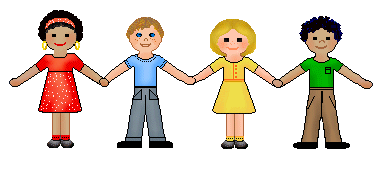Many early childhood educators realise the importance of supporting children to be conscious of their natural environment. Kaiako/Teachers will have their own strategies to provide a learning culture where children develop their working theories to take care of nature through their own creativity and play. Discussions can also be based around a responsibility that we all have to preserve and maintain the environment around us. From a Māori perspective, this involves the concept of Kaitiakitanga.
Kaitiakitanga is based on traditional Māori views and incorporates a strong connection between spirituality, people, and the natural world. Māori believe that the tangata whenua/people of the land, have a responsibility towards the protection or guardianship of Papatūānuku. "The basic meaning of ‘tiaki’ is to guard, but depending on the context in which it is used, it also means to preserve, keep, conserve, nurture, protect and watch over. The prefix ‘kai’ with the verb ‘tiaki’ denotes the agent of the action of ‘tiaki’. Therefore, a kaitiaki is a guardian, keeper, preserver, conservator or protector. The addition of ‘tanga’ denotes preservation, conservation and protection." (Source)
So how do we teachers apply this philosophy and practice into everyday routines in an early childhood setting? Some examples can include looking after plants and vegetation, tree planting, building a bug motel, an awareness of recycling bins and a discussion around where that goes, a visit to local nurseries and the closest recycling centre, as well as picking up rubbish during community excursions. The underlying essence is to build on an awareness of respect for Papatūānuku and how we can take care to nurture and preserve our natural environment. This kaupapa/philosophy of taking care of nature incorporates Māori ecological principles. "Respect is shown for Māori views of the world, the natural environment, and the child's connection through time to whenua, atua Māori and tipuna" (Ministry of Education, p.31, 2017).
The need to consult with local iwi can also be a good idea to ensure that traditional indigenous ways of doing things are being followed. Through this interaction, kaiako can also gather suggestions to involve tamariki in traditional Māori views around Kaitiakitanga. This awareness of our biculturalism can also lead to the narration of Māori myths and legends that tamariki really enjoy, from my experience. This offers an awareness of the importance of Papatūānuku and the natural environment around us. Our early learning curriculum suggests that kaiako use assessment to find out about what children know and can do. "A kaupapa Māori approach to assessment situates the child within Māori ways of knowing and being and is carried out in ways that recognise and support the educational aspirations that whānau have for mokopuna" (Ministry of Education, p.64, 2017).
Kaiako are strong role models for children and influence the way they understand the world around them. If adults are kind towards spiders and insects in the environment, children also get the message that all living things are entitled to our care and protection. "It’s about fostering a sense of belonging, respect and care for all living creatures, and an understanding of how to handle material resources in a limited world. Sustainability education is about fostering the world-view that we are in this together. Only through our common actions can despair be turned into hope." (Source)
In conclusion, a sense of connectedness to the environment can be fostered in our early childhood environment. This period is the foundation for children to develop and understand concepts around nurturing and sustainability. An understanding of kaitiakitanga sets tamariki on a pathway to be guardians of nature, to interact with Papatūānuku and all living beings in a respectful way.
"Kaitiakitanga is based on traditional Māori world views and includes the conservation, replenishment and sustainability of the environment. It is about safeguarding the future." Source
References
Boyd, W., Furu, AC. (2019). Children are our future, and the planet’s. Here’s how you can teach them to take care of it. (Source)
Ministry of Education. (2017). Te whāriki: He whāriki mātauranga mō ngā mokopuna o Aotearoa: Early childhood curriculum.
Understanding kaitiakitanga. (Source)
